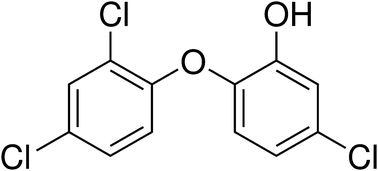The latest issue of JEM includes a collection of papers that resulted from the Society of Environmental Toxicology and Chemistry Asia/Pacific (SETAC A/P) 2010 meeting held in Guangzhou, China on June 4–7, 2010. The theme of this meeting was ‘‘Balance between economic growth and environmental protection: sustainability through better science’’, a subject close to the interests of JEM. Take a look at the editorial from Eddy Y. Zeng, Jing You and Hefa Cheng which emphasizes the importance of sustaining healthy economic growth in the Asia/Pacific region, particularly in China,while directing substantial efforts toward environmental protection.
 Featured on the outside front cover we have an article from Jing You (Guangzhou Institute of Geochemistry, Chinese Academy of Sciences) et al., on the problems associated with (often illegal) electronic waste disposal, specifically the short-range transport of contaminants released from unprotected recycling sites in China.
Featured on the outside front cover we have an article from Jing You (Guangzhou Institute of Geochemistry, Chinese Academy of Sciences) et al., on the problems associated with (often illegal) electronic waste disposal, specifically the short-range transport of contaminants released from unprotected recycling sites in China.
Short-range transport of contaminants released from e-waste recycling site in South China
Huizhen Li, Jinmei Bai, Yetian Li, Hefa Cheng, Eddy Y. Zeng and Jing You
J. Environ. Monit., 2011, 13, 836-843
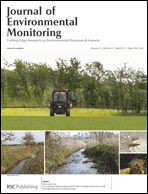 On the inside front cover we have an article from Jes Jessen Rasmussen and colleagues at Aarhus University discussing how pesticides impact stream ecosystems by applying a novel approach of grouping streams according to predicted pesticide runoff contamination.
On the inside front cover we have an article from Jes Jessen Rasmussen and colleagues at Aarhus University discussing how pesticides impact stream ecosystems by applying a novel approach of grouping streams according to predicted pesticide runoff contamination.
Local physical habitat quality cloud the effect of predicted pesticide runoff from agricultural land in Danish streams
Jes Jessen Rasmussen, Annette Baattrup-Pedersen, Søren Erik Larsen and Brian Kronvang
J. Environ. Monit., 2011, 13, 943-950
HOT articles in this issue:
The distribution of triclosan and methyl-triclosan in marine sediments of Barker Inlet, South Australia
Milena Fernandes, Ali Shareef, Rai Kookana, Sam Gaylard, Sonja Hoare and Tim Kildea
J. Environ. Monit., 2011, 13, 801-806
Geochemical characteristics of inorganic sulfur in Shijing River, South China
Yanqing Sheng, Guangyi Fu, Fanzhong Chen and Jing Chen
J. Environ. Monit., 2011, 13, 807-812
Polybrominated diphenyl ethers (PBDEs) in the riverine and marine sediments of the Laizhou Bay area, North China
Xiaohui Pan, Jianhui Tang, Jun Li, Guangcai Zhong, Yingjun Chen and Gan Zhang
J. Environ. Monit., 2011, 13, 886-893
Application of a battery of biomarkers in mussel digestive gland to assess long-term effects of the Prestige oil spill in Galicia and the Bay of Biscay: Lysosomal responses
Larraitz Garmendia, Urtzi Izagirre, Miren P. Cajaraville and Ionan Marigómez
J. Environ. Monit., 2011, 13, 901-914
Incidence of organochlorine pesticides in soils of Shenzhen, China
Hong-Gang Ni, Shan-Ping Cao, Ling-Yun Ji and Hui Zeng
J. Environ. Monit., 2011, 13, 951-956
Protein adducts as biomarkers of exposure to aromatic diisocyanates in workers manufacturing polyurethane (PUR) foam
Kirsi Säkkinen, Jarkko Tornaeus, Antti Hesso, Ari Hirvonen, Harri Vainio, Hannu Norppa and Christina Rosenberg
J. Environ. Monit., 2011, 13, 957-965
Correlation of six anthropogenic markers in wastewater, surface water, bank filtrate, and soil aquifer treatment
Marco Scheurer, Florian Rüdiger Storck, Carola Graf, Heinz-Jürgen Brauch, Wolfgang Ruck, Ovadia Lev and Frank Thomas Lange
J. Environ. Monit., 2011, 13, 966-973
Xiaohui Pan, Jianhui Tang, Jun Li, Guangcai Zhong, Yingjun Chen and Gan Zhang
J. Environ. Monit., 2011, 13, 886-893
DOI: 10.1039/C1EM10169B
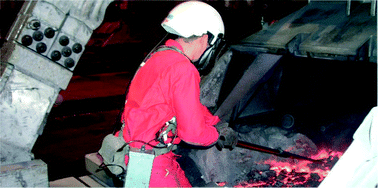 Data published in recent years has raised concern that the current occupational exposure limits (OELs) may not be low enough to protect workers from the toxic effects of exposure to beryllium. Beryllium is present in aluminium ores, and therefore workers in the primary production process of aluminium may be at risk from exposure, even at low levels, to Be.
Data published in recent years has raised concern that the current occupational exposure limits (OELs) may not be low enough to protect workers from the toxic effects of exposure to beryllium. Beryllium is present in aluminium ores, and therefore workers in the primary production process of aluminium may be at risk from exposure, even at low levels, to Be.










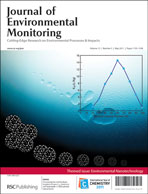 Our latest issue is a collection of articles on the theme of
Our latest issue is a collection of articles on the theme of 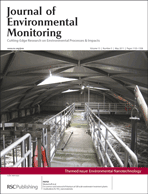 The
The  Featured on the
Featured on the  On the
On the 